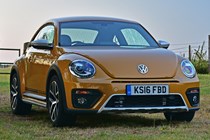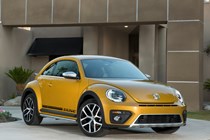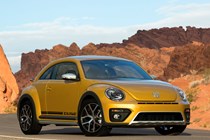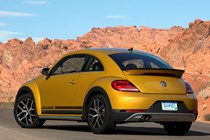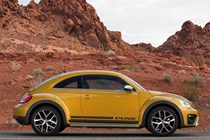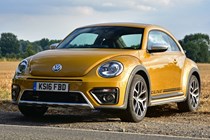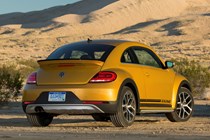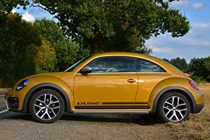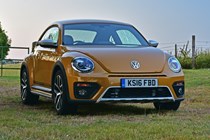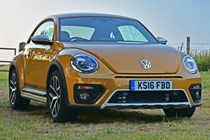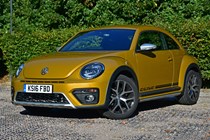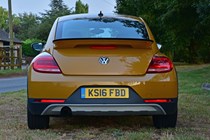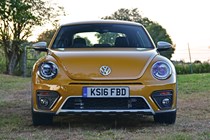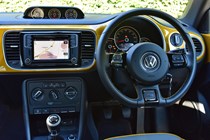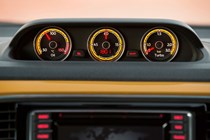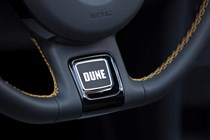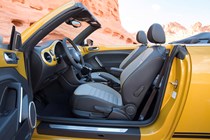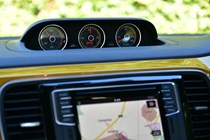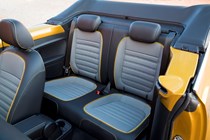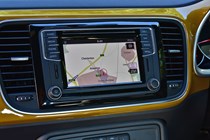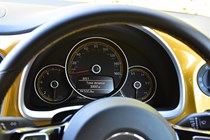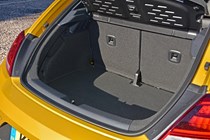
Volkswagen Beetle Dune Coupe (2016-2018) engines, drive and performance
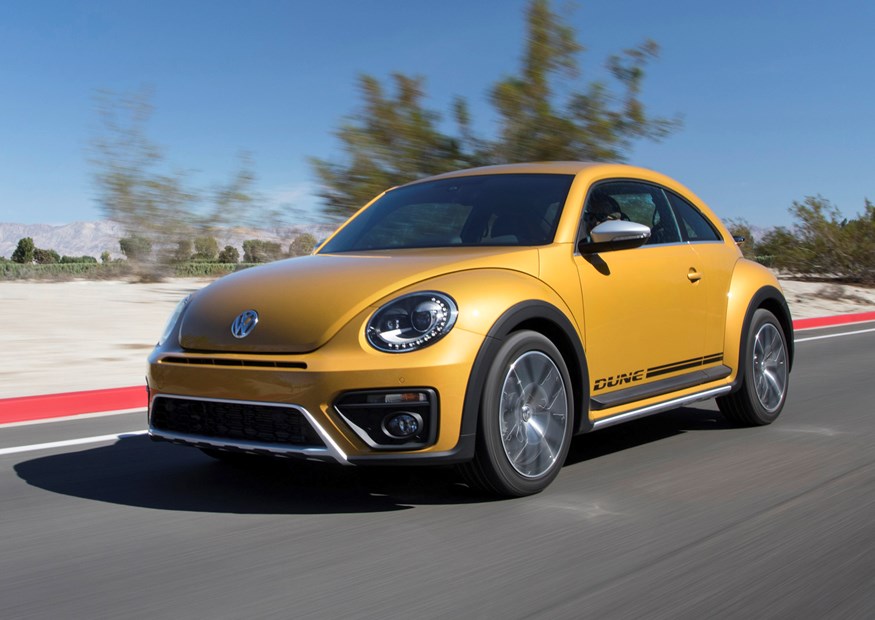
Only two of the standard Beetle’s engines make their way into the Dune – the 1.2-litre petrol and a 2.0-litre diesel. Both are available in manual and DSG automatic form, but that’s where your choices end.
With 105hp on tap in 1.2-litre petrol form, the cheaper Beetle Dune models aren’t fast. The engine needs to be worked hard to accelerate briskly and even then you’d expect a little more muscle from a car that costs so much. Thankfully though, the gearchange is slick, helping the driver to make the most of the motor’s power.
Press the throttle at low engine speeds and the motor pauses briefly before responding too – meaning that you often find yourself driving the Dune harder than you would a car that had more power in reserve. The petrol motor is more suited to gentle cruising than fast driving and fulfils this role well – feeling less overwhelmed by the weight of the car.
Meanwhile, claimed economy for both manual and automatic versions stands at just over 50mpg – not bad for a car of this size. The diesel shaves more than two seconds from the time the Dune needs to accelerate to 62mph, taking it down from 10.9 to 8.6 seconds – more than nippy enough for most drivers. Claimed fuel economy is not that different, however, with official figures of around 60mpg, depending whether you choose the manual or automatic.
Top speeds for the Dune come in at 110mph for the petrol and 124mph to 126mph for the diesel. Though automatic gearboxes often struggle when mated to less powerful engines, the 1.2-litre petrol works very well in DSG form, feeling surprisingly responsive compared with the manual.
Thanks to a premium of more than £2,500 for the diesel, the petrol makes more sense to most buyers – bar those who have to have the fastest or the most economical Dune.
The Dune is no sports car, but with wide, grippy tyres it is surprisingly fun to drive across twisty, undulating roads. In petrol form, the car has much more grip than power, meaning that it feels very safe and is adept at taking corners quickly.
The diesel offers a more even split between power and grip, but still wears wide rubber and shares the petrol model’s agility. The chunky tyres also give added weight to the steering, with the unusually narrow-rimmed steering wheel providing a good sense of confidence in how hard you’re working the front tyres.
Firm suspension meanwhile keeps the body of the car in check around bends. All in all, the Dune surprises the driver in just how capable it is in terms of tackling more challenging roads. The suspension may not be as soft as some rivals, but the Dune does a good job of taking lumps and bumps in the road in its stride, without being thrown off course.


